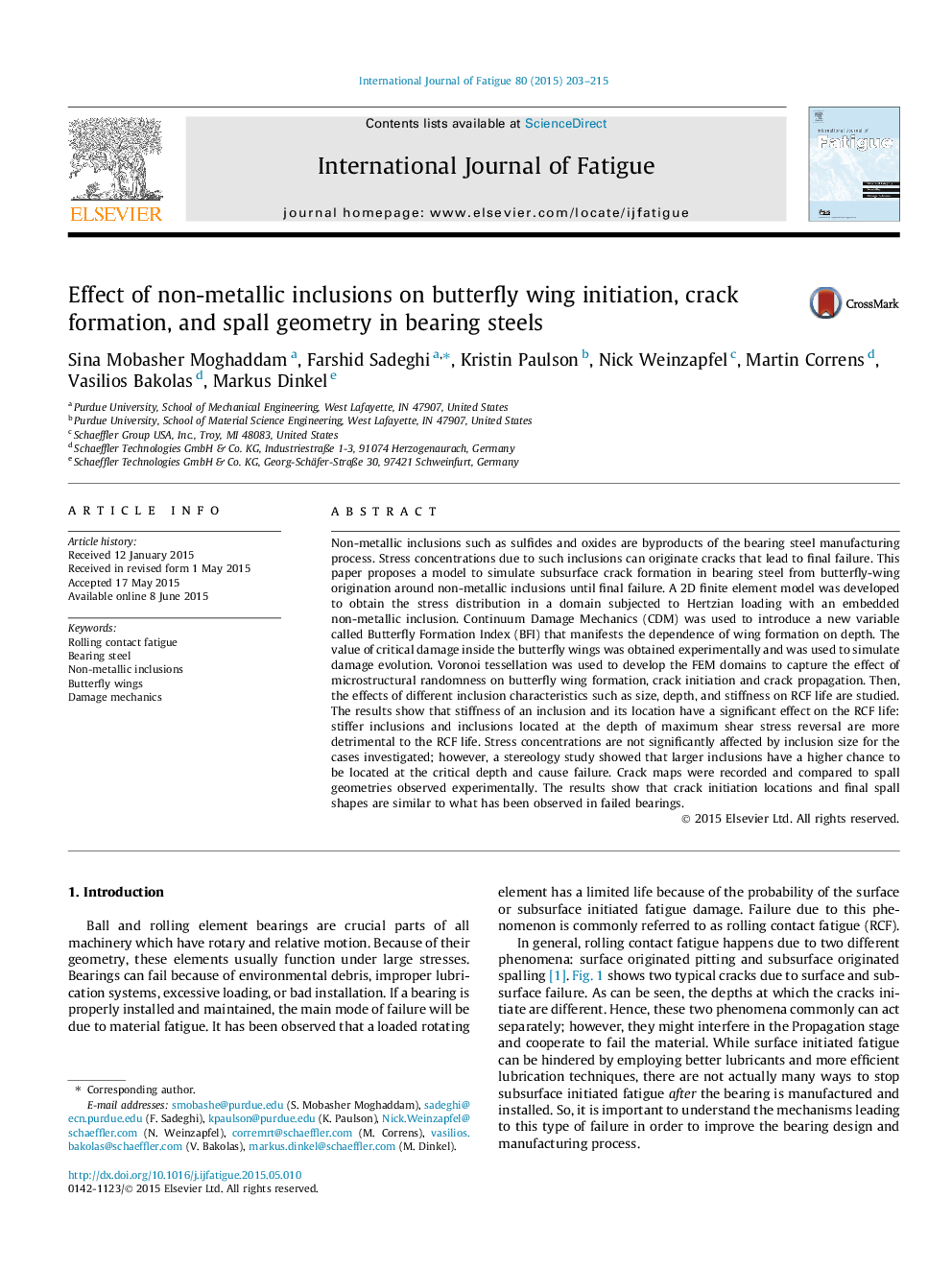| Article ID | Journal | Published Year | Pages | File Type |
|---|---|---|---|---|
| 776549 | International Journal of Fatigue | 2015 | 13 Pages |
•The critical damage inside the butterfly wings is measured experimentally.•A new variable (BFI) is introduced to relate butterfly formation to state of stress.•A novel approach is used to couple the wing initiation with RCF life.•Severity of different inclusions on RCF is studied relatively.
Non-metallic inclusions such as sulfides and oxides are byproducts of the bearing steel manufacturing process. Stress concentrations due to such inclusions can originate cracks that lead to final failure. This paper proposes a model to simulate subsurface crack formation in bearing steel from butterfly-wing origination around non-metallic inclusions until final failure. A 2D finite element model was developed to obtain the stress distribution in a domain subjected to Hertzian loading with an embedded non-metallic inclusion. Continuum Damage Mechanics (CDM) was used to introduce a new variable called Butterfly Formation Index (BFI) that manifests the dependence of wing formation on depth. The value of critical damage inside the butterfly wings was obtained experimentally and was used to simulate damage evolution. Voronoi tessellation was used to develop the FEM domains to capture the effect of microstructural randomness on butterfly wing formation, crack initiation and crack propagation. Then, the effects of different inclusion characteristics such as size, depth, and stiffness on RCF life are studied. The results show that stiffness of an inclusion and its location have a significant effect on the RCF life: stiffer inclusions and inclusions located at the depth of maximum shear stress reversal are more detrimental to the RCF life. Stress concentrations are not significantly affected by inclusion size for the cases investigated; however, a stereology study showed that larger inclusions have a higher chance to be located at the critical depth and cause failure. Crack maps were recorded and compared to spall geometries observed experimentally. The results show that crack initiation locations and final spall shapes are similar to what has been observed in failed bearings.
